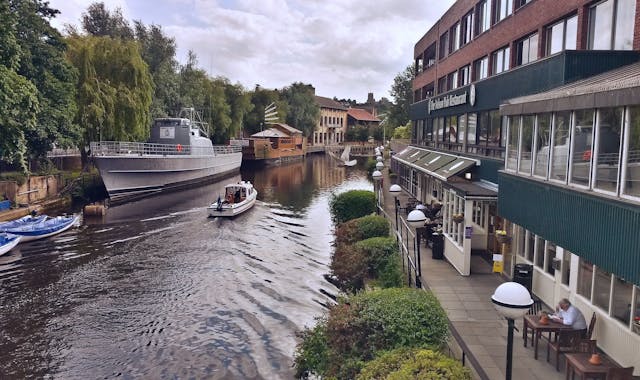York manages to combine centuries-old charm with modern convenience through a steady integration of digital tools into its daily rhythm. Local businesses, cultural attractions, and services have been adapting their operations so that people can move between physical and digital spaces with ease. This transformation has been gradual yet noticeable, shaping how residents and visitors alike plan their time, make purchases, and access information.
From Face-to-Face to Screen-Based
Activities that once required a physical presence increasingly have online alternatives. Booking a table in a restaurant no longer demands a phone call or a walk through the door; it can be done through an app within seconds. Live theatre and concerts have moved beyond ticket counters, with virtual booking systems offering seating charts and instant confirmation. Public talks, council meetings, and university lectures are now often streamed, widening their reach without the need for larger venues.
Recreation has followed a similar pattern. Gaming, once a matter of gathering in a room, now operates through global servers where participants compete from home. Gambling has shifted in much the same way, as sites open to UK players allow people in York to access a wider range of options. Some platforms outside GamStop registration provide more freedom in terms of play, higher transaction limits, and exclusive promotions for real-money games. The steady move from in-person formats to digital access has reshaped how these activities fit into daily life, creating a rhythm where convenience and reach work together to keep participation consistent.
Retail and Hospitality in Hybrid Mode
Shops in York increasingly maintain both a physical storefront and an online catalogue. A person can browse available stock before deciding whether to visit the store or complete the purchase from home. Payments flow through both contactless systems in-store and secure online checkouts. Even traditional market traders use shared e-commerce hubs to showcase goods, serving those unable to attend in person.
Hospitality businesses operate in the same dual manner. A café might run an online ordering system for takeaway alongside its tables for those who want to stay. Seasonal menus appear on social feeds that reach both regular customers and visitors who might not have passed by the door otherwise.
Tourism with a Digital Companion
Heritage attractions in York incorporate online features that complement rather than replace their physical spaces. Museum visitors can preview collections through high-resolution images or interactive models, then arrange timed tickets online. Guided walks use mobile apps to provide historical commentary, maps, and archival photographs. Some tours employ augmented reality to layer past architectural details over the present-day view.
Accommodation providers combine personal reception with digital efficiency. Bookings confirm instantly, preferences register automatically, and itinerary suggestions arrive via online concierge systems. These recommendations can be tailored to align with stated interests, making it easier for guests to choose where to go and what to see.
Transport and City Navigation
Public transport has shifted towards app-based information systems. Real-time arrival boards are mirrored on smartphones, while ticket purchases can be completed through mobile payment. Cycling schemes and e-scooter rentals work through location-based apps, guiding users to available units and handling all transactions without the need for staff intervention.
Car parking incorporates similar systems. Spaces can be located, reserved, and paid for remotely, reducing congestion in central areas. Visitors unfamiliar with the city’s streets can rely on navigation apps that incorporate traffic updates and suggest the quickest walking routes to specific destinations.
The Seamless Flow Between Spaces
What York has achieved is a rhythm where online and offline do not compete but operate in sequence. A person may watch a streamed event from the York Theatre Royal and then attend the next one in person. They might browse goods on a website and collect them from a shop such as The Shambles’ independent boutiques on the same afternoon. The presence of reliable digital infrastructure encourages physical participation by reducing the barriers that once discouraged it.
The city demonstrates that a heritage environment can adapt to a networked mode of living without losing its distinct identity. This blend works because each side supports the other. Digital tools extend the reach of physical experiences, while the city’s physical presence gives digital interactions a sense of place. The result is a setting where history and modernity run in parallel, each making the other more accessible.





